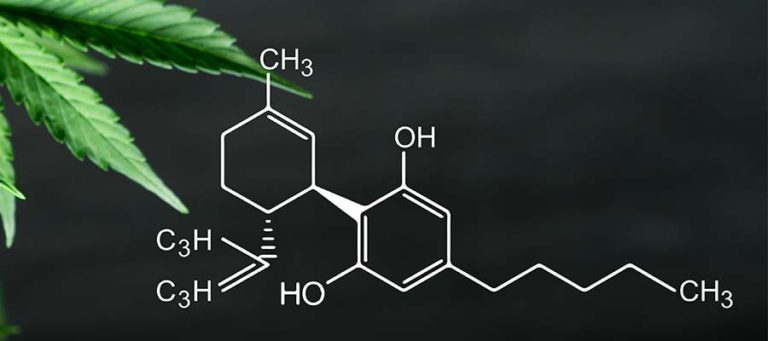Kindly provided by Katie Matthews of www.the123ofcbd.com

When talking with people about CBD and trying to differentiate it from THC and marijuana, many people get confused about the hemp plant and the legality issues. It is true that before I ever started learning about CBD, I had heard for probably over a decade about hemp rope, hemp clothing, hemp textiles, etc. I never associated hemp with drugs, but knew it was related to marijuana in some way and because of that it had a negative stigma. I had no idea that hemp was illegal in the US until I started delving into the CBD industry and I was completely shocked.
Why would a plant that produces textiles and also has proven medicinal value that doesn’t intoxicate, be labeled an illegal drug?
That question led me to discover the genesis of hemp and marijuana and the political influences and racial impacts that caused it to be made an illegal drug.
CBD has a long and storied past. Thought by some to be one of the first plants ever cultivated by humans, hemp has played an important role throughout much of human history. Astrophysicist Carl Sagan even theorized that hemp may have been the first-ever agricultural crop and may have lead to the development of civilization.
The first evidence of medicinal CBD being used dates back to 2900 BC in Ancient China with Emperor Shen Yeng, who is considered by many to be the father of Chinese medicine. He believed that hemp had medicinal properties and could be used for a wide variety of ailments. He frequently drank tea made with the plant.
Shen Yeng authored a text known as the Pen Ts’au. Still used by practitioners of Chinese medicine, it was one of the first medical texts to make reference to the therapeutic powers of the cannabis plant. Many priests and people being treated by Chinese doctors at the time would have been given a form of Cannabis for their illnesses.
Starting around 200 BC, when the Romans began their devastating military campaigns around North Africa, Europe, and Asia, they discovered hemp in many of the regions they conquered.
A Greek physician known as Pedacius Dioscorides accompanied the Romans on many of their campaigns. He gathered many of the plants he discovered in foreign lands and studied them as for their potential curative properties. He compiled his findings into a book, which became known as the Materia Medica. It covered over 600 different plants and their various effects and included cannabis as one of the plants that held medical potential.
Hemp and cannabis continued to spread throughout much of the European, Arabic, and Chinese worlds for the next thousand years. In the 12th century, it had spread throughout Egypt and much of Africa.
Hemp and marijuana are both produced from the cannabis plant, although hemp is derived from a strain that has a much lower quantity of THC, the compound that produces hallucinogenic effects. Hemp bred for textiles and not medicinal usage (CBD), is made from the fibers of the plant and historically has been used to make a broad variety of products, from ropes, to sails to cloth and paper. It had been an important crop in Europe and the Americas for centuries. The English word “canvas” derives from the Greek word kannabis.
Hemp became such a valuable crop, that in the 1500s, growing hemp was actually required by all farmers in England. Not growing hemp could result in a substantial fine. This same law was passed down to the colonies in the Americas. They determined that hemp was such an important product in the development of the New World as the American colonies were being established, that the 1619 Virginia Assembly held in London decreed that every farm in the colony was required to grow hemp. At the time, the crop was also considered a proper form of currency in Virginia, as well as Pennsylvania and Maryland.
Some Fun Facts:
- In 1776: The U.S. Declaration of Independence was drafted on hemp paper.
- In 1797: TheU.S.S. Constitution was outfitted with hemp sails and rigging.
- During the1790s: The U.S. founding fathers George Washington, Thomas Jefferson, and John Adams were growing hemp.
- During the 1840s: Abraham Lincoln was using hemp oil to fuel his household lamps.
After 1700, hemp was again used as a way of treating medical conditions. In 1753, Hemp was given its scientific name, Cannabis Sativa, by a Swedish scientist, Linnaeus. As an ingredient in patent medicine used in the treatment of gastrointestinal maladies, cannabis as medicine was common throughout much of the 1800s.
In the early 19th century, an Irish doctor working in India, William Brooke O’Shaughnessy, had observed that cannabis was used extensively in Indian medicine. He began experimenting and found it quite effective, not only for infantile seizures but also rheumatism and spasms caused by tetanus.
After O’Shaughnessy published his treatises on the plant, its use spread rapidly among physicians. By the late 19th century, cannabis was an important component of British and American physicians’ pharmacopoeia. Researchers suspect that these older cannabis cultivars, and the tinctures made from them, probably contained much less THC and much more CBD than the modern varieties today.
But in the late 19th century, our ancient relationship with this plant began to deteriorate and American’s attitudes towards cannabis began to shift. This was at least partly motivated by Mexican immigration to the U.S. around the time of the 1910 Mexican Revolution, according to Eric Schlosser, author of Reefer Madness: Sex, Drugs, and Cheap Labor in the American Black Market.

The Mexican Revolution had led to waves of immigrants crossing into the United States. Whereas many Americans took their cannabis orally in the form of tinctures, the new Mexican immigrants smoked it, a custom that was also moving north from New Orleans and other port cities from which African-Americans were beginning their own migration.
“The prejudices and fears that greeted these peasant immigrants also extended to their traditional means of intoxication: smoking marijuana,” Schlosser wrote for The Atlantic in 1994. “Police officers in Texas claimed that marijuana incited violent crimes, aroused a ‘lust for blood,’ and gave its users ‘superhuman strength.’ Rumors spread that Mexicans were distributing this ‘killer weed’ to unsuspecting American schoolchildren.”
Then during the alcohol Prohibition era, a Prohibition agent named Harry Anslinger, ran with these rumors in concert, if not in collusion, with publisher William Randolph Hearst (the owner of the largest newspaper company that was read by more than 20 million people in the US and arguably one of the most powerful men in American history), and with the Department of the Treasury (Anslinger was married to Treasury Secretary Andrew Mellon’s niece), and began demonizing this new threat to American children (and all-white women). Anslinger is credited with naming this new threat, “Marijuana”.
The market has rarely responded to a new word as enthusiastically as Anslinger’s and Hearst’s markets did to the introduction of the word, “marijuana”. “Marijuana” (literally, “Mary Jane”) was a slang word primarily used by Mexican laborers for the local cannabis crops along the Texas-Mexican border, which they smoked for relaxation.
As Mexican laborers migrated farther north in increasing numbers, some of the American laborers they met, largely black field and factory workers, acquired some their habits. Most of America’s blues and jazz icons emerged from this cross-cultural contamination (Anslinger’s characterization). Anslinger grew increasingly anxious over the popularity of dark-skinned musicians with lighter-skinned women. There had to be some sort of magic chemical cocktail which some of the greatest musicians of all time were using to attract otherwise sane women of skin lighter than theirs.

Anslinger hung out at jazz clubs and found his villain. People were more or less openly passing around hand-rolled cigarettes made of “tea”, “Muggs”, “pot”, “reefer”, “weed”, and occasionally, “marijuana”. Afterwards, they laughed a little, talked incomprehensible street jive, and then went back in and played and danced to incredible music. Harry liked the sound of “marijuana”, the abstract “foreignness” of it, the implied threat that went with anything foreign, especially brown, greaser Mexican foreign. “Marijuana”, the weed from Hell, which made white women want to touch black or brown men.
During the mid-’30s, Hearst newspapers started running stories implicating the use of “marijuana” in lurid accounts of horrible traffic disasters, whole-family mutilations, and various other otherwise-irrational acts. “But ‘marijuana’ makes these acts completely logical to its pitiful captives, who have become slaves to its false promise,” said the Hearst stories. The perpetrators were Mexicans, Puerto Ricans, and other dark-skinned folks, at first.

Then came the stories about kids from “Leave it to Beaver”-type homes. Middle-class white kids were being corrupted by darker-skinned people, who were unprincipled as a matter of genetics. The vehicle was “marijuana, the seemingly harmless weed with its roots in Hell”. According to the Hearst papers, pimple-faced blond suburb-dwellers were obtaining “marijuana” from Mexican, Italian, and Greek street gangs, then raping their sisters and killing their grandparents with meat cleavers.
In 1930, Anslinger assumed a new job running the newly formed Bureau of Narcotics (which is now the Drug Enforcement Agency) and he began acting on his disdain for Mexican-Americans and African-Americans. Modern scholars argue that his demonizing cannabis both justified his position and provided a way for him to gain legal leverage over peoples he despised. The high cost paid by people of color, once he had begun what we now call “the war on drugs,” may not have been an incidental byproduct of his efforts but an unstated goal from the start. His criticisms still echo today. Marijuana made people crazy, violent and prone to criminal behavior, Anslinger said.
Once the alcohol Prohibition ended in 1933, government funding for the Bureau of Narcotics was cut back substantially, so Anslinger needed to create a need for another Prohibition, this time for Marijuana. So in 1936, the liquor industry was motivated to fund the infamous movie titled Reefer Madness. This movie depicts a man going insane from smoking marijuana, and then killing his entire family with an ax. This campaign of lies, as well as other evidence, have led many to believe there may have been a hidden agenda behind Marijuana Prohibition.

Before the government began promoting reefer madness hysteria, the word marijuana was a Mexican word that was totally absent from the American vocabulary. In the 1930s, Americans knew that hemp was a common, useful, and harmless crop. It is extremely unlikely anyone would have believed hemp was dangerous, or would have believed stories of hemp madness. Thus, the words marijuana and reefer were substituted for the word hemp in order to frighten the public into supporting Hemp Prohibition. Very few people realized that marijuana and hemp came from the same plant species; thus, virtually nobody knew that Marijuana Prohibition would destroy the hemp industry.
Anslinger was such a staunch critic of the plant, he often ignored medical opinions and outright fabricated negative accounts of cannabis use and its effects. He wanted legislation to get passed to ban the plant and make it illegal for all uses, despite noting in his comments that the resin of male plants had no intoxicating effects.
He knew that by referring to it as “marijuana” rather than cannabis, he could create a narrative that the plant was something foreign that was “invading” the United States, rather than accurately portraying it as something that had been used within the country for hundreds of years.
Yet when 30 American Medical Association members, starting in 1929, were surveyed, 29 disagreed with claims about the dangers posed by cannabis. One said the proposals to outlaw it were “absolute rot.” But the hysteria Anslinger helped stir up worked politically.
In 1937, Congress passed the “Marijuana Tax Act”, which placed a $2.00 per ounce federal tax on trade in “marijuana”, making cannabis far too expensive and difficult to obtain. The only opponent to the bill (because almost no one knew that “marijuana” really meant “cannabis”, which had widely recognized medical application) was the lobbyist for the American Medical Association. He was dismissed rudely, and the bill passed in less than 90 minutes.
HOW BIG BUSINESS INTERVENES WITH PROPAGANDA
Shortly before marijuana was banned by The Marijuana Tax Act of 1937, new technologies were developed that made hemp a potential competitor with the newly-founded synthetic fiber and plastics industries. Hemp’s potential for producing paper also posed a threat to the timber industry. Evidence suggests that commercial interests having much to lose from hemp competition helped propagate reefer madness hysteria, and used their influence to lobby for Marijuana Prohibition.
Why do you think William Randolph Hearst helped catapult Anslinger’s smear campaign in his newspapers? Because the newspaper owner also had a significant stake in the timber industry!
Hemp was a potential threat to Hearst’s timber business for paper production. In 1916, the U.S. Department of Agriculture chief scientists processed paper from hemp pulp, and concluded that paper from hemp was, “favorable in comparison with those made with wood pulp.” The paper produced by hemp fibers did not yellow over time, unlike the chemical-drenched paper that was being produced at the time. In addition, an acre of hemp produces more paper than an acre of regular trees.

Also during this time, in the 30’s, Henry Ford opened a plant in Michigan where they successfully experimented with biomass fuel conversion, proving that hemp could be used as an alternative to fossil fuels. They extracted methanol, charcoal fuel, tar, pitch ethyl-acetate, and creosote all from hemp. What this meant for Ford was that he could now not only produce their own raw materials to make cars, but he could make the fuel to run them as well. The discovery was horrible news for Andrew Mellon, who owned much of the Gulf Oil Corporation; a company who had just recently opened their first drive through gas station.
As I mentioned before, Andrew Mellon was also the Secretary of the Treasury under President Herbert Hoover, and owner of the 6th largest bank at the time, Mellon Bank. His bank was the primary investor of a petrochemical company by the name of DuPont. DuPont was developing and patenting many different forms of synthetics from fossil fuels, including the synthetic rubber, plastic, rayon, and paint that GM used to coat their cars. However, Mellon Bank was most heavily invested in DuPont’s sulfur-based process of turning wood fiber into usable paper. So with the 1916 discoveries by the US Department of Agriculture, Mellon’s investment began to look like a flop.
Now Randolf William Hearst was heavily invested in thousands of acres in timberland to make wood pulp for most of the newspaper industry. Logically speaking, he didn’t want any competition from the high-quality hemp paper, so he had to do something. He soon teamed up with DuPont, who was providing Hearst with the chemicals he used to preserve his papers at the time.

Hearst began encouraging advertising and articles in his newspapers citing the dangers of cannabis. Some of these headlines made about marijuana by Hearst in the 1930s were:
“Marijuana: The assassin of youth.”
“Marihuana influences Negroes to look at white people in the eye, step on white men’s shadows, and look at a white woman twice.”
“Marijuana: The devil’s weed with roots in hell.”
“Marijuana makes fiends of boys in 30 days.” “If the hideous monster Frankenstein came face to face with the monster marijuana, he would drop dead of fright.”
Some of these articles were later used by Congress in their decision to ban hemp. The Marijuana Tax Act of 1937 banned both hemp and cannabis from being sold in the United States, cementing its illicit status into law.
Therefore, marijuana was banned to destroy the hemp industry.
1937 was also the year DuPont patented Nylon™. Now, if Nylon™ were to be the only available replacement, overnight, for hemp canvas, which might suddenly become unavailable (taxed out of existence), what might that mean for Nylon™ sales?

Many believe that Pierre DuPont and his banker Andrew Mellon, probably at least watched with interest as the “”marijuana” conspiracy” unfolded in the press, and were probably shoveling money at Hearst and promises of power at Harry Anslinger (remember, he was married to Andrew Mellon’s niece – the dots all connect nicely), as Big Business tends to do. Together, Hearst, DuPont, & Mellon, three of the most powerful men in America, would take hemp completely off the market.
Two articles were written on the eve of Marijuana Prohibition in 1937 that claim hemp was on the verge of becoming a super crop. These articles appeared in two well-respected magazines that are still published today. The articles are:
Flax and Hemp (Mechanical Engineering, Feb. 1937)
New Billion-Dollar Crop (Popular Mechanics, Feb. 1938)
This was the first time that billion dollar was used to describe the value of an agricultural crop. These articles praise the usefulness and potential of hemp by stating, “hemp can be used to produce more than 25,000 products” and “hemp will prove, for both farmer and public, the most profitable and desirable crop that can be grown.” Marijuana Prohibition took effect within one year after both these articles were written. Just goes to show what money, politics and power can do.

This brings me to the current legal status of cannabis. In 1970, President Nixon signed the Controlled Substances Act of 1970, even though scientists of Nixon’s era disagreed with him as well about marijuana’s supposed dangers. A plant that people had used medicinally for thousands of years had been completely driven underground. Therefore, marijuana became difficult for scientists, doctors, and any other persons to obtain and/or research.
The Controlled Substance Act established various “schedules” that drugs and substances were placed in, varying according to potential benefits, potential for abuse and more, with Schedule 1 as the most restrictive. Schedule 1 drugs include: heroin, LSD, ecstacy, magic mushrooms, and marijuana. One step below are Schedule 2 drugs, which include cocaine, meth, and opioids – so the government categorized marijuana as dangerous as heroin – AND more dangerous than cocaine, meth, and opiods (which kills 130 people per day)!
Marijuana falling into Section 1, perhaps because of a perceived danger, but, more likely, due to pushback from the growing pharmaceutical industry, that saw the potential for competition from this natural alternative to standard treatments. Once again, Big Business stepped in to keep cannabis oppressed.

Finally, in December 2018, the government passed the amended Farm Bill from 2014 legalizing industrial hemp in the US. So farmers can legally harvest hemp as long as it stays under the regulated .03% amount of THC by weight. Therefore, CBD derived from hemp is completely legal.
Marijuana, on the other hand, is only legal in various states, but remains illegal on the federal government level. So people can buy marijuana in states where it is legal or with a cannabis license in states where only medical marijuana is legal. However, it is illegal to cross from state to state carrying marijuana (driving or flying). It is also illegal to buy/sell marijuana between states. This could all change soon, as many senators and congressmen are actively trying to pass a bill to legalize marijuana in the US. I am very interested to see when that happens. Stay tuned!
Visit Katie’s site at www.the123ofcbd.com!









